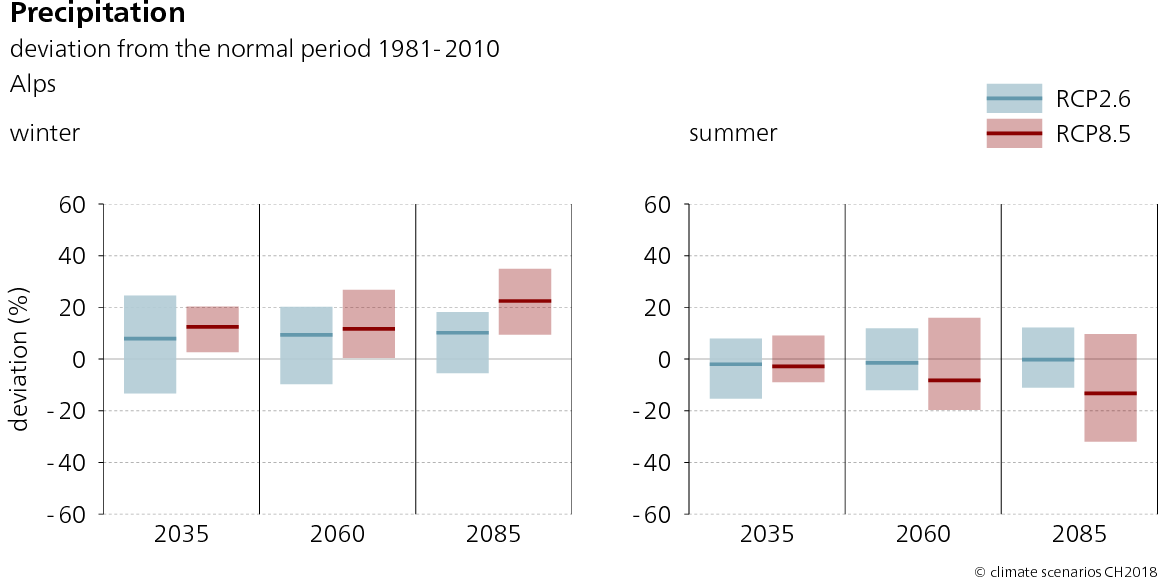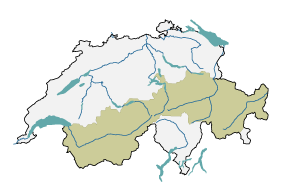In Switzerland, the Alps will be the region that experiences the most pronounced warming. If global greenhouse gas emissions continue to rise unchecked, the annual average temperature will probably rise by 2–4°C by the middle of the century. Precipitation is also expected to decrease in summer but increase in winter.
The content of this page is based on the Swiss climate scenarios CH2018. In the meantime, the new Swiss climate scenarios have been published as part of the Climate CH2025 project. They expand on the previous results with longer measurement series and information from new, high-resolution climate models. The qualitative statements remain unchanged from the CH2018 climate scenarios, but the quantitative estimates have changed. It is recommended that the results of Climate CH2025 be used.
Temperature
Since measurements began in 1864, temperatures in the Alps have risen significantly. How severely and quickly warming takes place depends on how the amounts of greenhouse gases in the atmosphere change. If greenhouse gas emissions continue unabated at the current rate (RCP8.5 emission scenario), the annual average temperature in the Alpine region of Switzerland can be expected to rise by an additional 2.1–3.9°C by the middle of this century. If a rapid reduction in greenhouse gas emissions (RCP2.6 emission scenario) can be achieved globally, however, the additional warming can probably be restricted to 0.7–2.1°C. In both cases, the warming will be greater in the summer than in the winter.
Precipitation
Summer precipitation in the Alps changed relatively little over the course of the 20th century. Without effective climate change mitigation (RCP8.5), precipitation in the winter is likely to increase even further in the future: By the middle of this century, climate models indicate an increase of between 0% and 17% in the months of December to February. In summer, the downward trend is less pronounced in the Alpine region than north of the Alps. The change in precipitation in this season ranges between -18% and +15% on average over the Alpine region; however, most model calculations do show a reduction in precipitation volumes. Climate change mitigation measures would moderate these changes significantly.
Heavy rainfall events are likely to increase in frequency and intensity in all seasons. In general, the uncertainty of changes in precipitation levels is greater than for changes in temperature.
What do RCP2.6 and RCP8.5 mean? You can find an explanation of the emission scenarios here.
Links
Observed climate change in Switzerland
Climate change scenarios CH2018 for the Jura region
Last modification 04.11.2025
Contact
Federal office of meteorology and climatology MeteoSwiss
Operation Center 1
P.O. Box
CH-8058 Zurich-Airport










